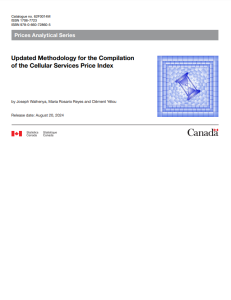Shana Tova – 5785 – שנה טובה
This year, Rosh Hashana, the two-day holiday marking the Jewish New Year, begins Wednesday evening, October 2. Rosh Hashana, literally “head of the year”, is the start of the year 5785.
Over the past few years, I have talked about how Rosh Hashana is very different from the celebrations marking the arrival of January 1. It is a time of reflection and introspection. We review the previous year, and look ahead to the next. But the past year has been unlike any other in my lifetime. For Jews around the world, 5784 was a troubling year. For the first time in nearly 80 years, it has been a challenging time for Jews in Europe and North America to wear signs that visibly identify ourselves.
As I noted last year, the first month in the Jewish calendar, Tishrei, is filled with holidays – what should properly be termed Holy Days. Combined with Rosh Hashana and Yom Kippur, there are 7 holy days this month. Rosh Hashana is on the 1st and 2nd of Tishrei; Yom Kippur is on the 10th of Tishrei (October 12); Sukkot runs from the 15th to the 22nd of Tishrei. Last year, the last day of Sukkot fell on October 7, a day that changed the world for Jews around the world. This year, 6 of the 7 days fall on Thursdays and Fridays, meaning that observant Jews need to take a lot of time away from the office. My office will close Wednesday (October 2) at 2pm, and remain closed for the rest of the week.
In last year’s post, I wondered if the world was more tolerant than I experienced in my early working years. I asked that in advance of October 7 and the disturbing waves of antisemitism that we have experienced over the past year. Would businesses and schools make reasonable accommodations for observance of the holidays? Please try to help your employees, your colleagues, your students, by making those conversations more comfortable.
Seven months ago, I wrote “Defending my identity”, trying to capture some of my feelings on the 5 month anniversary of the horrific terrorist attacks by Hamas. October 7, 2023 marked the start of a global campaign attacking Jewish indigeneity in Israel, a global campaign that began even before Israel’s military entered Gaza to respond to the attacks. I encourage you to re-read that piece to get an appreciation of what Jews like me are feeling as we approach the first anniversary of October 7.
Followers of this website know that I frequently travel to Israel. Israel is an intrinsic part of my Jewish identity. When Jews pray, we face toward Jerusalem. Our prayers and our bible contain countless references to Israel. Major Jewish festivals are tied to agrarian timetables and practices in Israel. I am not an Israeli citizen, but I have family who are.
The events of October 7, 2023 have been deeply troubling to me. The response – or more correctly, the lack of moral leadership – by Canadian officials has been disturbing. The sacking of British Columbia’s NDP cabinet member Selina Robinson demonstrates a pervasive rot – or latent antisemitism – among many political leaders.
I am tired of politicians thinking that the way to respond to antisemitic acts is to write on Twitter that “This is not who we are” or claim that “Hatred and violence against Jewish communities have no place in Canada.”. Condemnations on social media are no match for intimidation by throngs calling “Death to the Jews”. Tweets are ineffective against firebombings and shots fired at synagogues and Jewish community centres.
In defending freedom of expression, I have frequently quoted Aaron Sorkin’s brilliant speech from The American President. “You want free speech? Let’s see you acknowledge a man whose words make your blood boil, who’s standing center stage and advocating at the top of his lungs that which you would spend a lifetime opposing at the top of yours.”
Still, there are limits to those speech rights. As CIJA said in a statement, “We cannot allow mob-driven demonstrations to obstruct our right to participate fully in society.”
Which brings me to how you fit in to help in defending my identity. In resigning from British Columbia’s provincial NDP caucus, Selina Robinson wrote, “I don’t need your hugs and your emojis. What my community needs however, is for you to stand up to antisemitism.”
Call out hate when you see it online. Tell your elected officials that antisemitism isn’t just a problem for Canada’s Jews. Demand action.
And every once in a while, I’d be OK with a hug.
Last year, I observed that the journey we travel over the course of a year often takes some detours, presenting challenges along the way. “It is rarely a smooth, incident-free trip. Sometimes, it feels more like we are riding a roller coaster. Still, we press ahead, continuing to approach each day with a positive outlook, moving forward one step at a time.”
Who knew what this past year was going to be like?
May we see the unconditional release of the hostages being held in Gaza. May the year ahead be marked by good health, by personal and professional growth, and may it be a year of peace for all. Shana tova.
May you be inscribed and sealed for a good year.
לשנה טובה ומתוקה
May you enjoy a good and sweet new year.



